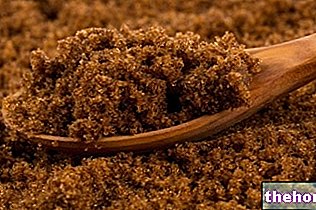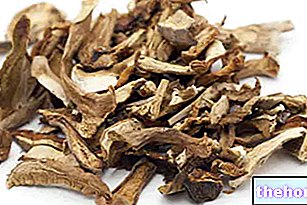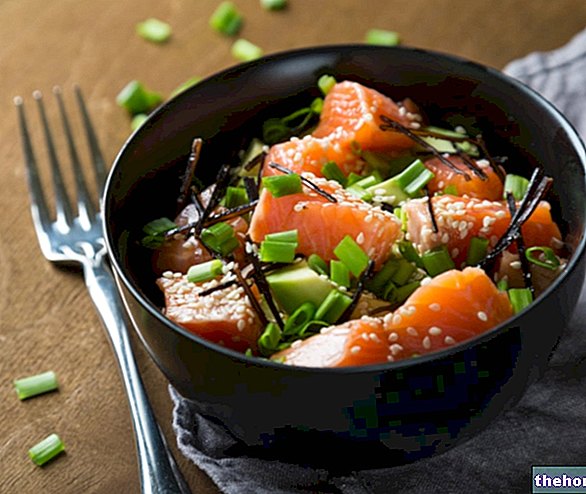Generality
The Grana Padano, also known as Piacentino, is a dairy product typical of northern Italy; more precisely, its origins can be placed in the area between the Adda river, the Mincio river, the Po river and the Milanese latitude.

The nutritional properties of Grana Padano are fair. It represents an "excellent source of calcium, phosphorus and high biological value proteins; on the other hand, it provides high quantities of calories, sodium chloride and glutamate. This last substance, widely used by the food industry as a flavor enhancer. , develops naturally during the aging of the Grana Padano.
Background
The birth of the Grana Padano could be placed approximately around the year 1000 AD. The discovery is attributable to the Catholic monastic order of the Cistercians of Chiaravalle who, by reclaiming the Lombard forests, promoted local agriculture and cattle breeding (probably of the Reggiana Red). . Obviously, the large pastures also supplied considerable quantities of highly perishable fresh milk (in fact, in those days, modern preservation methods could not be used). Precisely from this need to keep the animal liquid in the best possible way, and for as long as possible, the monks adopted the cheese making of caseus vetus (old cheese), which only became Grana Padano in 1951.
The product quickly acquired an "excellent reputation, consequently it was spread first in the surrounding areas, then in all the extra-Po territories. Some finds from 1334 mention the Grana Padano as one of the foods used in the canteens of long maritime galleys, while in 1477 it became part of the cheese treatise of the Savoy doctor Pantaleone da Confienza.
Production
The recipe of the Grana Padano still respects the ancient traditions of the Cistercian monks today (obviously, in compliance with some hygienic-sanitary adjustments).
The animals most used for milk production are (to date) the Friesian cows (Black Pezzate); these cows are mainly fed by green or preserved fodder obtained from farm crops or in the area where the Grana Padano PDO milk is produced. milk destined for the production of the cheese remains raw but is partially skimmed by natural surfacing. The curd is obtained in copper boilers with a capacity of about 1,000 liters, from which only 2 forms of Grana Padano can be obtained. The resulting curd is then broken into small pieces, purged and heated to 55 ° C. The mixture is then divided into special molds, which imprint the marks of origin, for at least 48 hours. It is then immersed in brine for about a month. Once drained, the curds salted, they are left to mature in special rooms with a constant temperature of 18-20 ° C and humidity of 85%.

Nutritional values (per 100 g of edible portion)
At the cross section, the Grana Padano is circular in shape; in its entirety, however, it looks more like a cylindrical and flattened block. The diameter of the wheel is between 35 and 45 centimeters, while the height is 18-25 centimeters and the weight varies between 24 and 40 kilos.
As we have seen, the wheels immediately receive the brand of the four-leaf clover (identification code) but only after maturation (12 months, 24 months and more, the period in which they are turned and dusted), we proceed to the lozenge of the words "Grana Padano" . If the product does not have the required characteristics, the origin marks printed on the molds are canceled.
The main evaluation criteria for the suitability of the cheese, adopted by the commission of internal inspectors, are: the "absence of" voids "(checked with a hammer) and the typical taste of the food (tasted by drilling a drill into the form ).
The only exception to the wording of the lozenge is represented by the "Grana Trentino", suitably regulated and characterized by the use of grazing cows in the Alpine valleys.
Discover the Video Recipe of Homemade Grated Vegan "Cheese"
Physical, Organoleptic and Tasting Characteristics of Grana Padano
Grana Padano is a cheese with a hard consistency, so much so that it should NOT be cut, but "broken" by means of the "special" drop-shaped "knife / awl. The color of the paste varies between white tending to straw yellow and pale yellow (in the more seasoned ones). The aroma of the Grana Padano is typical, the taste is elegant and particularly savory.
In the kitchen, Grana Padano is suitable for grating and, in addition to being part of different recipes or doughs, it accompanies many types of first courses, appetizers, side dishes and dishes. It is also suitable as a table cheese and as a more complex gastronomic combination.
See examples of recipes with grated parmesan cheese
The most suitable wine-making combination is with wines such as: Amarone della Valpollicella, Barolo Spers and Marchese di Villamarina.
Nutritional Properties
Of its category (cheeses), the Grana Padano is considered among the most digestible of all; however, this does NOT mean that it is a light and easily digestible food in an absolute sense. Its primary nutritional characteristics are:
- Lactose deficiency, despite being a milk derivative
- Wealth of high biological value proteins
- Wealth of calcium and phosphorus
- Rich in riboflavin (vitamin B2)
- Wealth of retinol equivalents (pro-vit. A)
- Medium intake of fat (minimum 32% on dry matter), as it comes from partially skimmed cow's milk
- Significant presence of cholesterol
- Plenty of total calories
- Excess sodium
- Excess of sodium glutamate (flavor enhancer).
The low presence of lactose is attributable to the long aging, during which the microorganisms involved in the process use the disaccharide for their own cellular metabolism. The proteins, with a high biological value, are partially hydrolyzed, therefore more digestible than those of milk.
Calcium, phosphorus, riboflavin, retinol, total fat and calories are the result of the "concentration" caused by the relative dehydration (curd, salting and maturing) of the cheese; the nutritional content is richer and more concentrated the more "mature" it is.
Unfortunately, Grana Padano owes its shelf life to the massive presence of sodium and part of its flavor to that of glutamate.
Grana Padano is a food that, always in addition to first courses (about 5-10g) or 1-2 times a week as a dish (70-80g), can be easily contextualized in any diet. Its main function is to increase the intake of calcium and riboflavin, which is why it is recommended to use it during the growth phase. However, it is necessary to keep in mind that it is a product that is remarkably rich in sodium (harmful for arterial hypertension), cholesterol (harmful for hypercholesterolemia) and glutamate (potentially harmful for allergy sufferers or hypersensitive people).
Filled Grana Baskets with Bulgur Salad
Problems with playing the video? Reload the video from youtube.
- Go to the Video Page
- Go to the Video Recipes Section
- Watch the video on youtube
Milk, Dairy Products and Cheeses Asiago Brie Burrata Caciocavallo Rennet Camembert Cheddar Milk Cream Crescenza Emmental Feta Milk Flakes Fontina Herbal Cheeses Lean Cheeses Cheeses rich in calcium Gorgonzola Gouda Grana Padano Gruyere Kéfalair Adapted milk Artificial milk Condensed milk Asphyxiated milk Goat's milk Sheep's milk Rice milk Soy milk Powdered milk and concentrated milk Skimmed and semi-skimmed milk Lactose-free milk Milk Vegetable milk Dairy products Lerdammer Mascarpone Montasio Buffalo mozzarella Mozzarella Whipped cream Cooking cream Fresh cream Parmigiano Reggiano Pecorino Philadelphia Primo Sale Provolone Ricotta Robiola Roquefort Scamorza Sottilette Squacquerone Taleggio Tomino Yogurt OTHER ARTICLES MILK AND DERIVATIVES Categories Alcoholic foods Meat Cereals and derivatives Sweeteners Sweets Offal Fruit Dried fruit Milk and derivatives Legumes Oils and fats Fish and fishery products Cold cuts S pezie Vegetables Health recipes Appetizers Bread, Pizza and Brioche First courses Second courses Vegetables and Salads Sweets and Desserts Ice creams and sorbets Syrups, liqueurs and grappa Basic preparations ---- In the kitchen with leftovers Carnival recipes Christmas recipes Light diet recipes Women's Day, Mum, Dad Recipes Functional Recipes International Recipes Easter Recipes Recipes for Celiacs Recipes for Diabetics Recipes for Holidays Recipes for Valentine's Day Recipes for Vegetarians Protein Recipes Regional Recipes Vegan Recipes




























